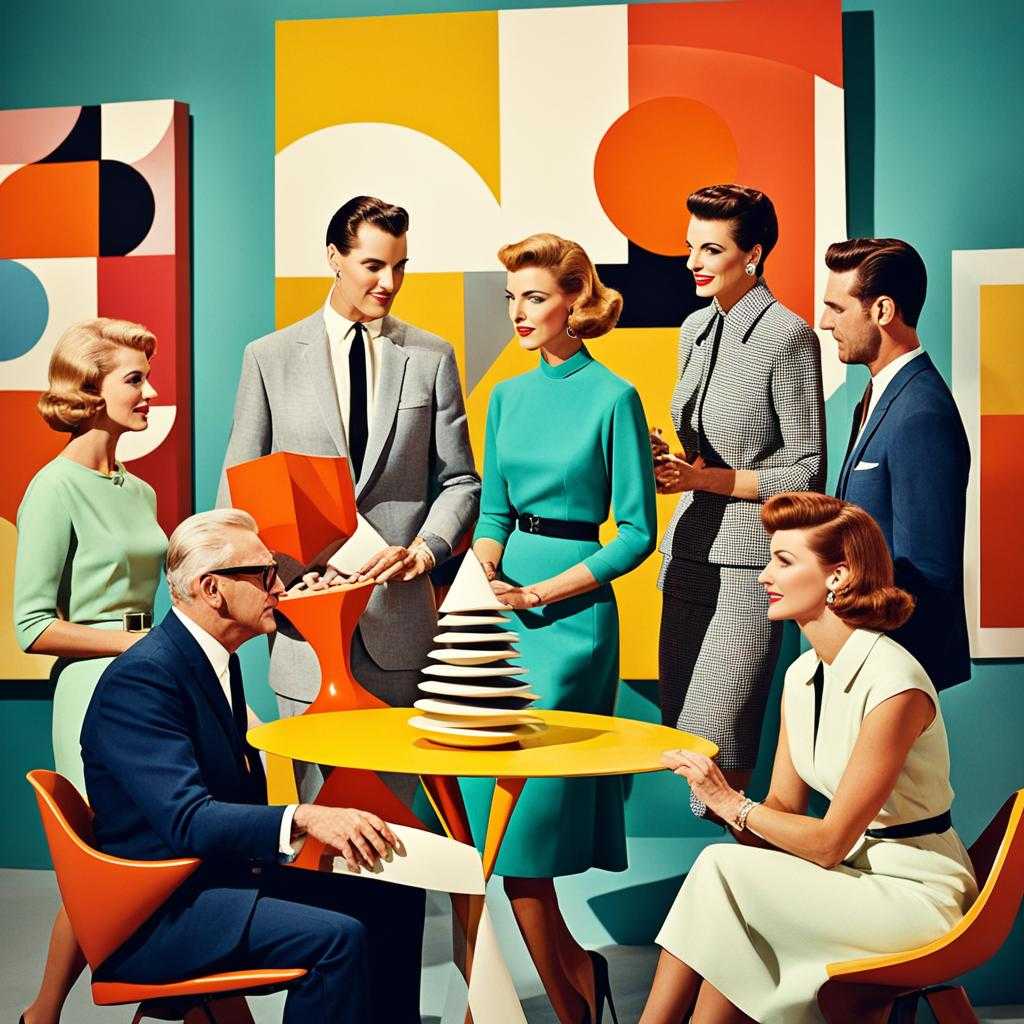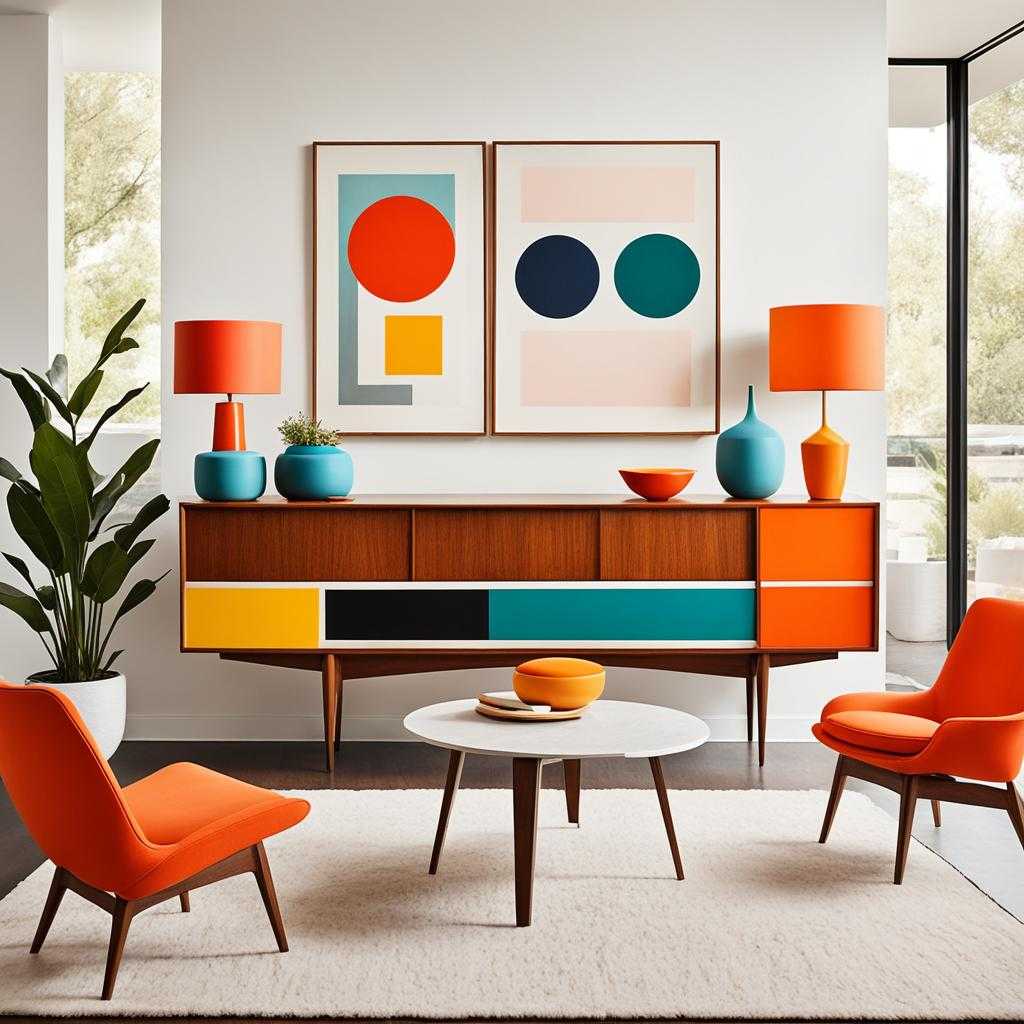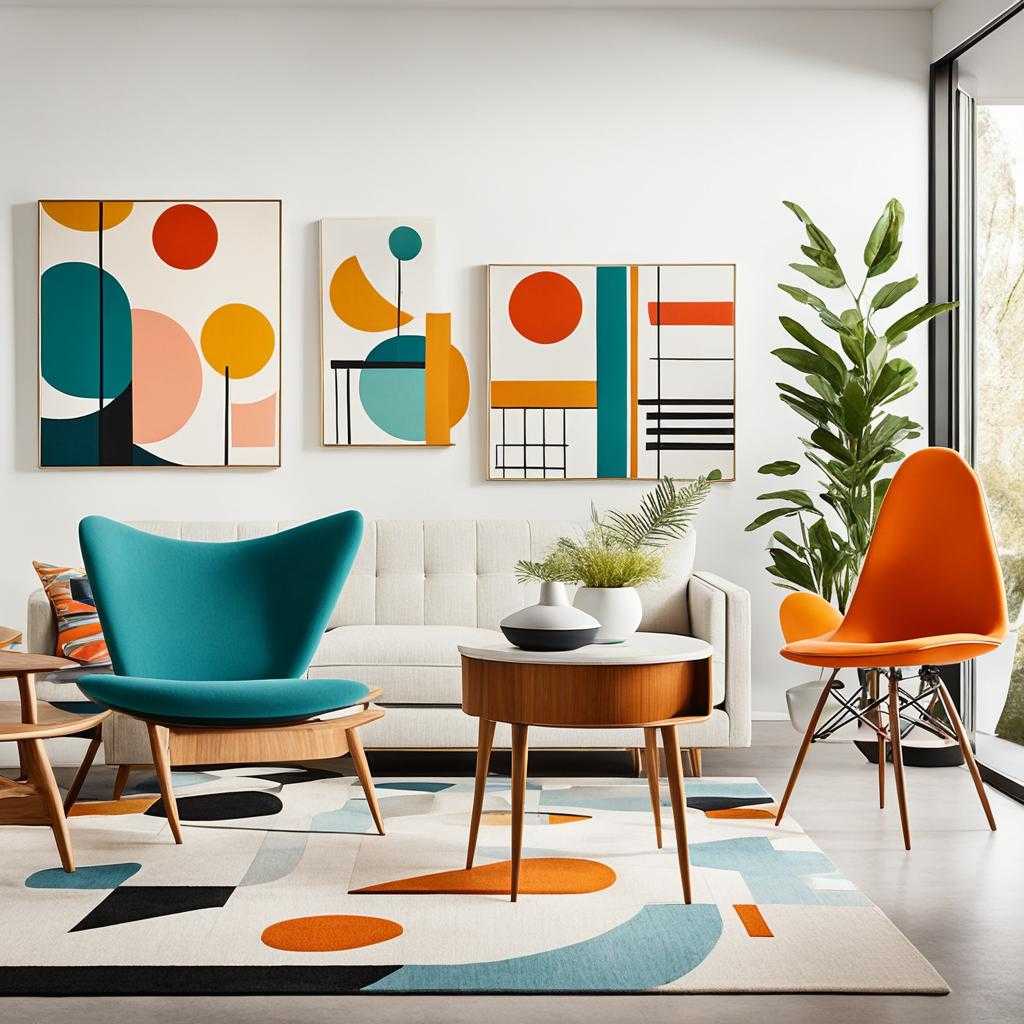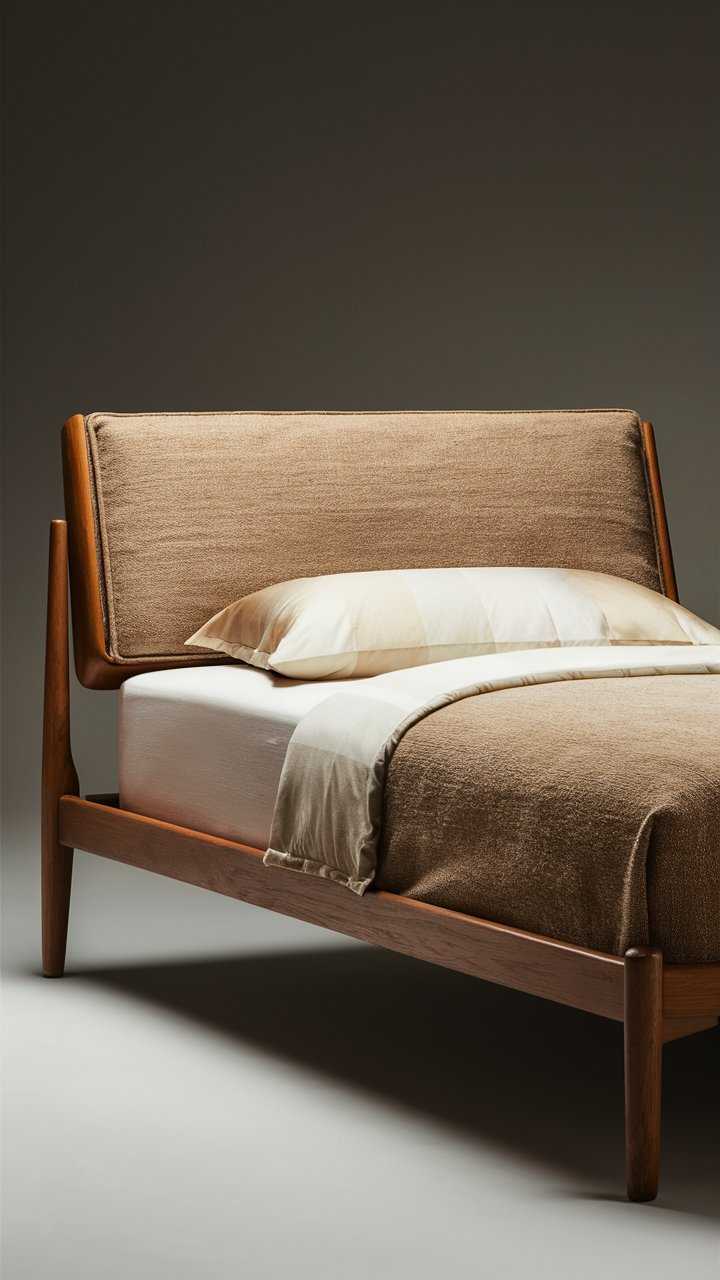Mid Century Modern Art: Iconic Design & Style
The mid-20th century was a big change in art and design. It brought us the iconic Mid Century Modern style. This style was big in the 1950s and 1960s. It’s known for its clean lines, simple shapes, and a mix of old and new materials.
Mid Century Modern art and design are all about clean lines and simple shapes. They use bold and minimalist designs. You’ll see a mix of traditional materials like wood and modern ones like vinyl and plexiglass.
This style has touched many areas, from painting to sculpture and architecture. It changed how we see and use our surroundings. Let’s dive into the world of Mid Century Modern art. We’ll look at its key features, the artists who made it, and its effect on today’s art and design.
Key Takeaways
- Mid Century Modern art and design is known for its clean lines and simple shapes. It mixes old and new materials.
- This style has greatly influenced art, architecture, and furniture design.
- It’s loved for its timeless look, versatility, and practicality.
- Artists and designers like abstract expressionists and avant-garde pioneers shaped this movement.
- Mid Century Modern still inspires today’s art and design trends.
Defining Mid Century Modern Art
The Mid-Century Modern design era lasted from the 1930s to the 1960s. It’s known for its iconic style and lasting impact on today’s design. This style had its own unique look that was different from before and after.
Stylistic Features of Mid-Century Modern
Mid-Century Modern design loved clean lines and simple shapes. Designers used bold, geometric shapes and focused on function. They used new materials like plastic and wood, making their designs stand out.
Art and graphics from this era were both useful and beautiful. They used colors in a way that was both pretty and subtle. Furniture and objects were designed to be both good-looking and practical.
Designers from Scandinavia like Arne Jacobsen, Alvar Aalto, and Verner Panton were big names. So were American designers Florence Knoll, Ludwig Mies van der Rohe, and the famous Eames duo. These designers are linked to the Bauhaus movement and Mid-Century Modern design. They greatly influenced ergonomic furniture and design icons.
Influential Artists and Designers

Mid-Century Modern art and design were shaped by many influential artists and movements. Andy Warhol made iconic silkscreen portraits that changed pop art. Jackson Pollock created groundbreaking drip paintings that changed abstract expressionism.
Jean-Michel Basquiat mixed Neo-Expressionist and Primitivist styles, adding to Mid-Century Modern art. Wassily Kandinsky pushed abstract art to new heights with his work. Willem de Kooning blended abstraction and figuration in his art.
| Artist | Artistic Movement | Defining Characteristics |
|---|---|---|
| Andy Warhol | Pop Art | Iconic silkscreen portraits of celebrities |
| Jackson Pollock | Abstract Expressionism | Pioneered the drip painting technique |
| Jean-Michel Basquiat | Neo-Expressionism, Primitivism | Raw, energetic works |
| Wassily Kandinsky | Suprematism, Constructivism | Blended abstract styles |
| Willem de Kooning | Abstract Expressionism | Unique interplay between abstraction and figuration |
These artists and their works shaped Mid-Century Modern art’s look and feel. Their influence still inspires and captivates people today.
“Art is not what you see, but what you make others see.” – Edgar Degas
mid century modern art Movements

Mid-century modern art was full of different styles and movements. It went from bold abstract art to vibrant pop art that questioned consumer culture. Artists like Mark Rothko used big colors to make people feel things. Jackson Pollock changed art with his unique way of painting.
These artists started a new kind of art that was decorative. Designers took inspiration from Kandinsky, Matisse, and Miró. They used geometric patterns, earthy tones, and primary colors in their work.
Abstract and Pop Art Influences
In the 1960s, pop art came out as a bold, colorful way to react to consumer culture. Artists like Andy Warhol used new techniques to talk about everyday icons. They mixed abstraction and realism in their work.
Today, you can see the impact of these art styles in mid-century modern homes. You’ll find sleek furniture, clean lines, and bold colors. It shows the lasting beauty of mid-century modern design and the vision of its creators.
“Mid-century modern art movements redefined the boundaries of creative expression, paving the way for a new era of design that continues to captivate and inspire.”
Architectural Marvels

After World War II, a new era began for mid century modern architecture. This era brought International Modernism, the American version of the Bauhaus movement. It changed how cities and suburbs looked. Tall skyscrapers went up in cities for more office space. In the suburbs, affordable single-family homes became popular.
This time was a peak for modernist architecture. Buildings from then still amaze people today. They are often seen in movies or photographed. Artists like Stephanie Kloss, Tim Hölscher, Martin Kasper, and Sabine Wild show the beauty of Mid-Century Modern architecture in their art.
- The rise of International Modernism, the American successor to the Bauhaus movement, transformed urban and suburban landscapes in the post-World War II era.
- Towering skyscrapers were built in cities to accommodate growing office space demands, while the suburbs saw the construction of modular, affordable single-family homes.
- This era of democratic socialist planning created a high water mark for modernist architecture, with iconic buildings that still look contemporary today.
- Artists like Stephanie Kloss, Tim Hölscher, Martin Kasper, and Sabine Wild have explored and captured the striking Mid-Century Modern architecture in their works, highlighting its timeless appeal.
“The buildings of this era continue to captivate audiences, often serving as backdrops for films or the subject of striking photography.”
Conclusion
Mid-Century Modern art, design, and architecture still grab our attention with their unique look and feel. They mix old and new materials in a way that’s both clean and organic. This mix has made them a big deal in many creative fields.
Now, Mid-Century Modern items, like famous furniture and art, are very sought after. They fit well with many interior designs, mixing old and new looks. This shows how big an impact this style has had on art and design in the 20th century.
The Mid-Century Modern style is still loved for its classic look and many design choices. It shows how lasting its impact is. Adding mid century modern design and vintage art to today’s homes is a sign of good taste and timeless style.






